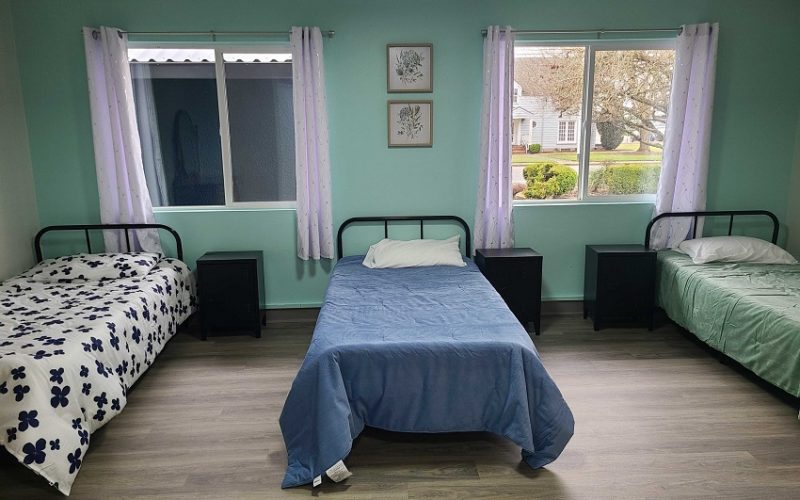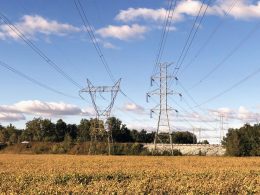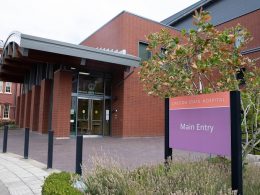Salem, OR – Salem, Oregon, has long faced the challenge of addressing homelessness and providing adequate shelter for its vulnerable populations. In recent years, state funding has played a pivotal role in shaping sheltering efforts across the city, fueling the development of emergency shelters, affordable housing, and comprehensive support services. With the ongoing pressure of rising housing costs and an increasing number of people experiencing homelessness, state-backed funding continues to be a vital tool in shaping Salem’s approach to this persistent issue.
Emergency Shelters and Immediate Relief
One of the primary ways state funding has impacted sheltering in Salem is through the operation and expansion of emergency shelters. The Oregon Emergency Housing Account (EHA), a key state program, allocates resources to local governments and nonprofits for the establishment of temporary housing for those in immediate need. In Salem, this funding has helped keep shelters operating year-round, providing not only a safe place to stay but also essential services such as meals, sanitation, and security.
Nonprofit organizations in Salem have leveraged state funds to expand their capacity to serve the homeless population. These shelters are often a first step for individuals experiencing homelessness, offering them a place of refuge before they are connected to long-term solutions such as affordable housing or employment programs.
Affordable Housing Initiatives
In addition to emergency shelter efforts, state funding has been instrumental in the creation of affordable housing options throughout Salem. The Oregon Housing and Community Services (OHCS) agency administers various funding programs that directly support affordable housing projects. These funds have allowed local developers to construct and maintain rental housing options that are affordable for low-income individuals and families.
Key programs such as the Low-Income Housing Tax Credit (LIHTC) and affordable housing preservation funds have helped offset the costs of new housing developments in Salem, making them viable even in an increasingly expensive market. These investments have led to the creation of new rental units and housing opportunities for individuals at risk of homelessness, providing them with the stability they need to build their lives.
Prevention Programs: Keeping People Housed
State funds have also supported a range of homelessness prevention programs designed to keep people housed before they fall into crisis. Rent assistance programs, eviction prevention services, and emergency financial aid have been essential in helping low-income tenants in Salem avoid losing their homes. As rents continue to climb across the state, these programs are seen as crucial for maintaining housing stability and reducing the overall homeless population.
During the COVID-19 pandemic, these prevention efforts gained even greater importance as the economic impact of the crisis pushed many more families to the brink of homelessness. The state’s quick response, including expanded rent assistance programs and eviction moratoriums, helped many Salem residents stay in their homes during a time of widespread uncertainty.
Supportive Services for the Homeless
While emergency shelter and affordable housing are central to homelessness solutions, state funding has also supported the provision of critical services that help people transition out of homelessness. In Salem, state resources have been used to fund mental health counseling, substance abuse treatment, job training programs, and access to healthcare. These services are essential for individuals who face complex challenges beyond just securing a roof over their heads.
Supportive housing programs, which combine stable housing with on-site services, have received significant state investment. These initiatives are specifically designed to assist individuals experiencing chronic homelessness, offering them a pathway out of the streets and into long-term stability.
Temporary Sheltering in Times of Crisis
State funding has also proven crucial in responding to specific crises that exacerbate homelessness. The COVID-19 pandemic, for example, saw an influx of state funding to help prevent the spread of the virus among vulnerable homeless populations. In Salem, this led to expanded motel voucher programs, increased shelter capacity, and enhanced sanitation efforts at shelters. Temporary shelters became a necessary lifeline for individuals seeking protection from the pandemic, and state funds helped ensure they had the resources to meet these heightened needs.
Collaboration with Nonprofits and Local Agencies
A key aspect of Salem’s success in addressing homelessness is the collaboration between state agencies, local governments, and nonprofit organizations. Salem’s nonprofit sector, including groups like the Salem Housing Authority and The Salvation Army, have been able to secure state funds for a range of programs aimed at providing shelter, housing, and support services. This collaborative approach has allowed resources to be pooled and distributed effectively, creating a more coordinated system of care for the city’s homeless population.
However, even with these efforts, challenges persist. The demand for affordable housing far outpaces the supply, and the number of individuals and families experiencing homelessness continues to rise. Despite the successes, there remains a need for sustained and increased investment to ensure that Salem’s shelters, housing projects, and support services can meet the growing demand.
Looking Ahead
As Salem continues to navigate the complexities of homelessness, state funding will remain a cornerstone of the city’s efforts. With housing affordability continuing to be a significant barrier, the need for state investment in both immediate shelter and long-term housing solutions will only increase. As local organizations and government officials look to the future, the continued flow of state funds will be critical in ensuring that the city can meet the needs of its most vulnerable residents and work toward ending homelessness in Salem.
In the coming years, Salem’s success in addressing homelessness may depend on not only sustaining current funding levels but also finding innovative ways to expand the scope of sheltering and housing opportunities for those in need. With continued state support, the city may find a path forward that prioritizes both immediate relief and long-term stability for its homeless population.











